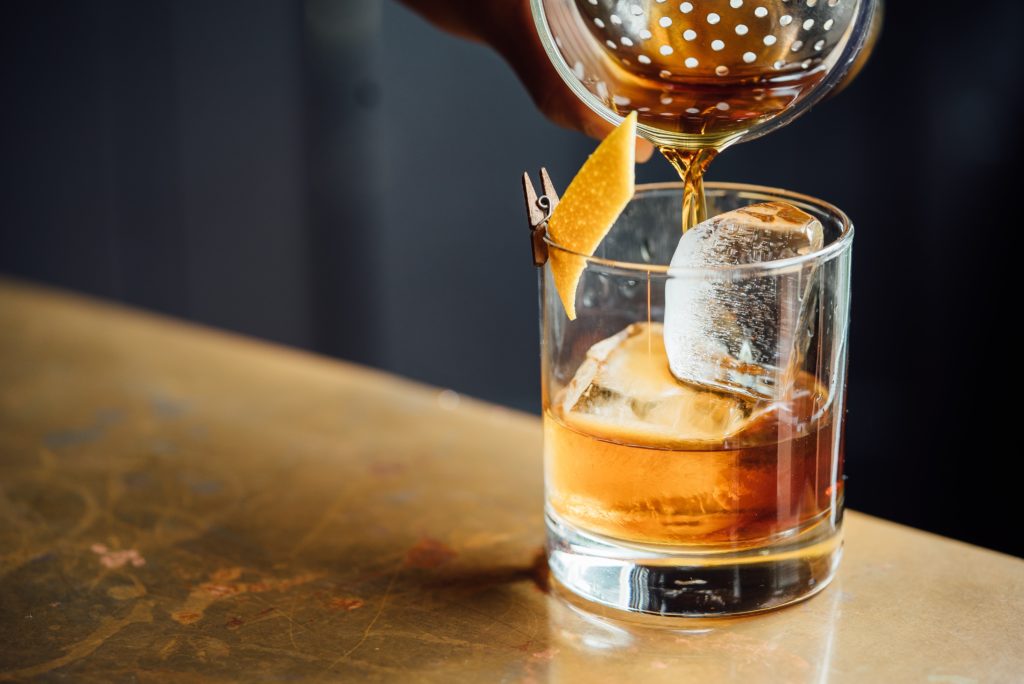Alcohol Consumption and Health in the COVID-19 Era
During pandemic, it seems to be 5 P.M. everywhere.

Alcohol has been the go-to numbing agent for many people during the pandemic. Among all the profound changes in the way we live, work and play due to COVID-19, perhaps one of the most disturbing trends has been our increasing consumption of beer, wine and spirits.
Remember all those memes about day drinking while working from home? Turns out they were accurate. It has been serious enough that hospitalizations for alcoholic liver disease have gone way up since early 2020 (Cahan 2021).
Health economist Carolina Barbosa, PhD, and colleagues at the nonprofit research institute RTI International surveyed American drinking habits before and during lockdown and again as restrictions eased. The survey showed that Americans were drinking more on average during the pandemic than beforehand. They were also exceeding alcohol consumption guidelines more and binge-drinking more. Barbosa says the largest increases in consumption were in Black and Hispanic women, Black men, “men of other races,” and women with children under the age of 5. People with mental health issues also reported increases in drinking as a coping mechanism.
Why are people consuming so much alcohol?
“COVID-19 restrictions continue to have serious impact on the psychological well-being of all, especially those most susceptible to negative effects of decreased social interactions and disruptions to work, school and leisure activities. People often increase alcohol intake to cope with emotional stress and chronic uncertainty,” says Barbosa. “Women are more likely to use alcohol to cope. This might explain the larger increase for women compared with men. In addition, women carry most of the responsibility for child care, and this might explain the increase in consumption for people with kids, and in particular, women with young kids.
The increase in drinking among Black Americans can be explained by the well-documented disproportionate impact of the pandemic on racial and ethnic minorities and by other factors, such as distress from ongoing racial injustice.”
The American Psychological Association, in its Stress in America™ report, also noted increases in alcohol consumption, with nearly 1 in 4 Americans saying they began drinking more during the pandemic to cope with stress (APA 2021). The irony is that, while alcohol can temporarily relieve stress, in the long run it can contribute to anxiety and depression (Pollard, Tucker & Green 2020).
Unfortunately, Barbosa’s research shows that consumption hasn’t decreased as COVID-19 restrictions have eased. When asked how we can support clients and friends who are drinking more, Barbosa replied, “If people are drinking more because they are lonely or stressed, then a clear first step is to recognize the cause, and then find other, more healthy ways to handle that loneliness or stress. Reach out to a friend or family, if possible. Some may need to seek professional help either for their mental health or for the use of alcohol or other substances.”
Current guidelines on alcohol consumption from the 2020–2025 Dietary Guidelines for Americans are no more than two drinks per day for men or one drink per day for women (USDA 2020). We all need to be aware of the consequences of drinking more than recommended. Health risks include liver disease; cardiovascular disease; some types of cancers, including cancers of the mouth, throat, colon and liver; depression; and increased risk for postmenopausal breast cancer (NIAAA 2021).
For those who are interested in cutting back their consumption but not cutting alcohol out, there is a concurrent trend of new drinks that may help. Janet Helm, MS, RDN, chief food and nutrition strategist at Weber Shandwick, a firm specializing in food trends, notes that zero-proof spirits, creative no-alcohol “mocktails,” and low- and no-alcohol beers are more widely available and more popular than ever (Bandy 2021; Eads 2021). Let’s raise a nonalcoholic glass to that!
See also: Is the Party Over for Drinking Alcohol?
References
APA (American Psychological Association). 2021. Stress in America™. Accessed Aug. 23, 2021: apa.org/news/press/releases/stress/2021/sia-pandemic-report.pdf.
Bandy, J. 2021. Beverage trends of 2021: Non-alcoholic drinks. Goliath Consulting Group. goliathconsulting.blog/2021/01/11/beverage-trends-of-2021-non-alcoholic-drinks/.
Cahan, E. 2021. Pandemic-fueled alcohol abuse creates wave of hospitalizations for liver disease. Accessed Aug. 25, 2021: khn.org/news/article/pandemic-fueled-alcohol-abuse-creates-wave-of-hospitalizations-for-liver-disease/.
Eads, L. 2021. The brands and trends shaping the low- and no-alcohol category. thedrinksbusiness.com/2021/03/the-brands-and-trends-shaping-the-low-and-no-alcohol-category/.
NIAAA (National Institute on Alcohol Abuse and Alcoholism). 2021. What are the consequences? Accessed Aug. 25, 2021: rethinkingdrinking.niaaa.nih.gov/How-much-is-too-much/Whats-the-harm/What-Are-The-Consequences.aspx.
Pollard, M.S., Tucker, J.S., & Green, H.D. 2020. Changes in adult alcohol use and consequences during the COVID-19 pandemic in the US. JAMA Network Open, 3 (9), e2022942.
USDA (United States Department of Agriculture). 2020. Dietary Guidelines for Americans 2020–2025. Accessed Aug. 27, 2021: dietaryguidelines.gov/sites/default/files/2020-12/Dietary_Guidelines_for_Americans_2020-2025.pdf.
Sanna Delmonico, MS, RDS, CHES
"Sanna Delmonico, MS, RDN, CHE, is an associate professor at the Culinary Institute of America where she teaches food safety and nutrition. She previously led programming for the CIA Healthy Kids Collaborative and the CIA-Harvard Healthy Kitchens, Healthy Lives Continuing Medical Education Conference. Prior to joining the CIA, she was an instructor at Santa Rosa Junior College where she co-coordinated the dietetic technician program. Sanna develops delicious, seasonal recipes and writes about food and nutrition for publications, including IDEA Fitness Journal. She lives in Napa, California, and is a home winemaker."





